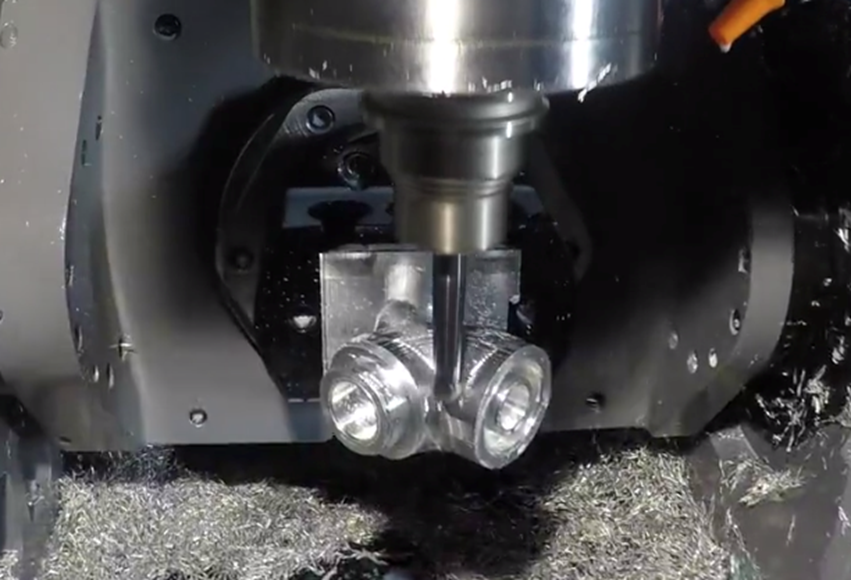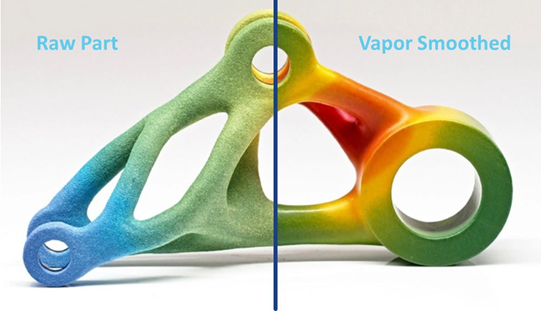
On May 25 and 26, 2021, Cimquest held its annual Xpand3D event, virtually.
R&D Tax Savers took a team approach to attending the event. The event opened on May 25th with Rob Hassold, Cimquest CEO, introducing Todd Grimm, Additive Manufacturing Consultant at T.A. Grimm & Associates, Inc, who provided an overview of the Additive Manufacturing (AM) industry and his thoughts on where the industry is headed. Grimm noted the biomedical and pharma industries were big this past year but focused more on what AM needs to be doing now in and in the next five to ten years, which it is currently not doing.
Here are some of our engineering team’s summaries of the sessions they attended. This is part two of two; please read part one here with insights into selecting your company’s first 3D scanner, optimizing your manufacturing process with training, and whether metal 3D printing is ready for prime time.
The Future of CAD
Randall Rothbort
The Future of CAD discussion was a great view into the future technologies being used and incorporated into CAD software. Jon Hirschtick (founder of SOLIDWORKS and Onshape), Blake Courter (CTO of nTopology) and Rob Hassold (CEO of Cimquest) spoke regarding current developments in CAD, future goals, and how the industry will be shaped by current technological advancements.
Two main focuses of the discussion were the impact of AI/Machine Learning on CAD, as well as the implementation of cloud computing into the systems. All three universally saw the potential of AI in improving the capabilities of CAD systems, allowing more menial and rule-based parts to be created automatically. However, while Blake and Rob saw this as reducing the role of the designer, Jon saw this as just a progression of the tool, amplifying the engineering rather than reducing it. This connects to a later discussion on parametric design, especially regarding producing alternative parts based on one master part. Rob brought up specifically how machine learning will be adapted to create these parts, reducing the time spent by engineers designing repetitive components. This functionality is just beginning to be made available, nTopology being one system that can accomplish it.
The group also discussed the shift of CAD software from the current, license-based platform to a cloud-based platform that gives control to the user. Jon discussed the impact that cloud computing has on CAD, detailing OnShape’s cloud-based model rather than a license model. This gives the user more freedom and improves the overall experience through seamless updates and support, rather than forcing users to purchase new versions yearly. Blake focused greatly on the impact of nTopology’s unique methods of generative design, and how they give control of the IP to the users. Rather than a CAD file, the files are simply codes that allow the user to edit, render, or print. Both methods move away from the previous “walled garden” CAD systems and move to a more up-to-date model.
There was also a great discussion between all members regarding the future of CAD and who will be revolutionizing it, all three of whom see startups as the likely suspect. Rob brought up Jon’s own SOLIDWORKS specifically as being the original CAD revolutionizer, and how a similar company could do the same, potentially in the fields of implicit design and field-driven modeling. Rather than viewing CAD models as analog models, Blake sees the future of CAD digitally, viewing models as code that details the structure of an object, rather than a set of lines that limit the object. This makes it easier for CAD models to be interpreted by computers (such as Arduinos) or by 3D printers. As other technology and CAD itself progresses, these visions will likely come to fruition.
This discussion was incredibly unique, as it featured some great minds in the CAD industry debating the merits of various new advancements, as well as them giving their own visions on where they believe CAD will go as an industry. It is clear that with the propagation of 3D printing and other modeling-focused industries, CAD will continue to push innovation in engineering forward.
How Functional Color is Changing the Game in Additive Manufacturing
Arianna Coger

“How Functional Color is Changing the Game in Additive Manufacturing,” presented by HP Inc., focused on the advancement of 3D printing methods to develop functional colored parts. The addition of color can help improve the clarity and accuracy of models as well as enable the easy production of parts that are ready for consumer usage. Common methods of adding color to prints often involve paint or filament changes, which are labor-intensive solutions, binder jetting, which cannot produce strong parts, or multiple extruders, which can have reduced precision.
The HP Multi Jet Fusion printers can be used to print colored parts with fully fused nylon as the material, providing high durability. This method of printing lets companies produce functional prototypes due to the enhanced mechanical properties of nylon, which can be used to accurately model intricate and small details for parts without breakage. HP MJF color printing can be used for a variety of purposes, ranging from developing color-coded fixtures to anatomical models to customizable consumer goods. HP’s color 3D printing technology can help companies expand the capabilities of their prototyping, manufacturing, and marketing processes to achieve greater success.
The Additive Manufacturing Technologies (AMT) presenters of “A More Colorful AM Future: HP’s Color MJF Parts with AMT’s PostPro Vapor Smoothing“ described the collaboration between HP Inc. and AMT to improve the color quality of 3D printed parts. Although the HP MJF printer can produce strong parts, without further processing they often have imperfections due to the rough, porous surfaces. These imperfections can also reduce the vibrance and quality of colored prints.
AMT’s PostPro chemical vapor smoothing technology can be used to dissolve and distribute partially fused particles in a controlled manner. This automatic processing reduces surface roughness and completely seals the surface of parts without changing the part dimensions. The technology can augment the mechanical properties of prints by improving the elongation at break, leading to higher quality products. The quality of color prints is also enhanced, with greater color saturation and colorfastness than prints that have not undergone processing. The combination of HP MJF printers and AMT’s PostPro system can help expand the usage of color in 3D printing. With this technology, a more colorful additive manufacturing future is sure to come.
The Research & Development Tax Credit
Whether it is used for creating and testing prototypes or for final production, 3D printing is a great indicator that R&D Credit eligible activities are taking place. Companies implementing this technology at any point should consider taking advantage of R&D Tax Credits.
Enacted in 1981, the now permanent Federal Research and Development (R&D) Tax Credit allows a credit that typically ranges from 4%-7% of eligible spending for new and improved products and processes. Qualified research must meet the following four criteria:
- Must be technological in nature
- Must be a component of the taxpayer’s business
- Must represent R&D in the experimental sense and generally includes all such costs related to the development or improvement of a product or process
- Must eliminate uncertainty through a process of experimentation that considers one or more alternatives
Eligible costs include U.S. employee wages, cost of supplies consumed in the R&D process, cost of pre-production testing, U.S. contract research expenses, and certain costs associated with developing a patent.
On December 18, 2015, President Obama signed the PATH Act, making the R&D Tax Credit permanent. Since 2016, the R&D credit has been used to offset Alternative Minimum Tax (AMT) for companies with revenue below $50MM and, startup businesses can obtain up to $250,000 per year in payroll tax cash rebates.
Conclusion
Cimquest did an excellent job of getting the industry leaders together for one 3D printing event. It showcased what the industry is currently doing as well as forthcoming trends in the next few years. Our engineering team thoroughly enjoyed the virtual experience and is hoping for a live one soon.
This is part two of two; please read part one here with insights into selecting your company’s first 3D scanner, optimizing your manufacturing process with training, and whether metal 3D printing is ready for prime time.
